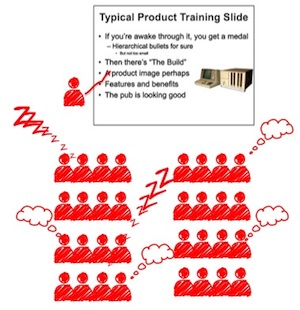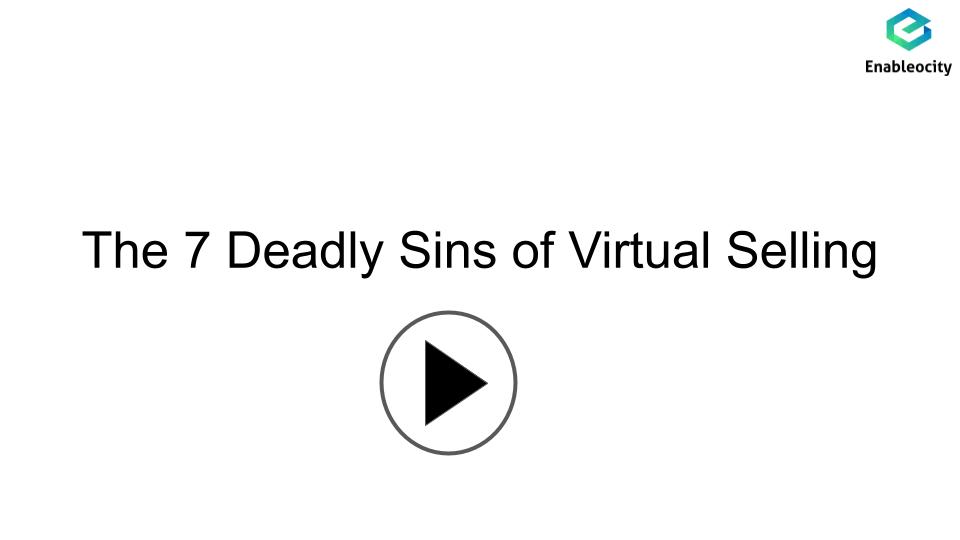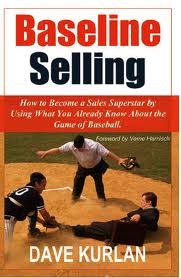The PowerPoint Cringe
I’ve developed a conditioned reflex when I know I’m going to have to sit through a PowerPoint presentation. After nearly two years of working on whiteboarding to communicate with buyers instead of presenting to them, I feel a certain uneasiness and find myself shifting in my chair, stomach sometimes churning and often - my jaw clenching when the presentation starts.
This is a conditioned response and natural reaction to the way the majority of 
sales and marketing presentations unfold; the slides are dense and chock-full of words, the medium is dull, the delivery is product-centric and tedious and the presentation style is generally uninspiring – exactly the type of atmosphere you want to avoid when trying to inspire people to action!
However, I recognize that there are certain situations in which PowerPoint is unavoidable. Conference organizers may require that presenters deliver information using the same slide template; corporations may insist that you use the corporate slide deck or potential customers may specifically request a PowerPoint presentation.
In these cases, how can you use a PowerPoint presentation without boring your audience to tears or losing out on the engagement levels that other delivery styles allow?
Here’s one rule that’s worthy of repeating – “Never give a presentation you would not want to sit through.” (Nancy Duarte)
In truth, it is possible to create engaging PowerPoint slides, but it takes a lot more effort than most people think. Unfortunately, because the vast majority of presentations are created the night before they’re used, preparation is rushed, the ideas are jammed-up against each other and it’s no wonder the majority of them fail to achieve their intended outcomes.
The worst offenders are often our sales and marketing leaders, who beat us over the head with bullet after bullet at the annual sales kick-off meeting. By avoiding their example and adhering to the following guidelines, you’ll increase your odds of both connecting with your audience in a delightful, authentic way and delivering a message that’s both well-received and retained.
Lesson #1 – Be prepared to present naked.
Recently I read "The Naked Presenter" and recommend it for its simple message to all presenters. Here is a partial list of the things that have gone wrong for me as I began presentations in my selling career;
- The bulb blows on the projector just as you are getting started and there is no spare
- Your computer crashes on slide 3,
- The projector is weak, just not enough Lumens,
- There’s too much ambient light to make out the slides?
- At your kick-off, the sales people are either jet lagged or hung-over and come in late and fall asleep,
- Or worse still, the buyer comes into the room and says, I'm sorry, something has come up, I've only got 10 minutes.
- You didn't allow yourself enough time to get to the buyers office to complete set-up and test 30 minutes in advance of the scheduled meeting and you are stuffing around with the projector and cables when the buyer and his team enter the room and valuable credibility is lost.
When it comes to giving a sales presentation, many things can go wrong – and often do...particularly difficult to overcome is the opening, "I've only got 10 minutes" statement. (Which is why salespeople need to create a visual confection of their story printed on high quality paper, that can be pulled out in this case and the buyer can be engaged and walked through.
If you think about your presentation objectively, you’ll realize that it’s just a visual aid to help you to convey concepts. In fact, you are the presentation – it’s you they came to see. As a result, you should be able to present your ideas without the laptop or PowerPoint, as you never know what type of situation you’ll encounter when you arrive for your presentation.
To prepare for this, imagine walking into the room naked… It’s just you, but it’s O.K. because everyone else is naked too.
You don’t have anything other than what God gave you – and you’ve got to use these skills to create a connection and convey your ideas without the crutch of Power Point or other tools. To see how this can be done (except without actual nudity), go to the TED Talks website and listen to the passion, emotion, conviction and insight that these speakers bring, using minimal visual aids to make their points.
Lesson #2 – Less is more
One temptation with Power Point is the propensity to add more information than is truly necessary and I think this is part of the problem; PowerPoint is really easy for presenters to use and create slides.
Since adding more information is as simple as clicking the “New Slide” button, many presenters fall into the trap of addressing multiple story lines within the same presentation – leading to disjointed, muddled messages and sides loaded with every possible feature/benefit.
To prevent this from occurring, start by outlining what you want to say in your presentation, pen and paper will suffice or even the outline view in PowerPoint, but I prefer using a mind mapping tool. I use and recommend
Mindjet, but there are many tools out there that can facilitate this process.
From the thoughts that you write down, select one major story arc, along with no more than a handful of key takeaway points you’d like your audience to remember.
Ultimately, delivering a single, compelling message will be more effective than going on various related tangents. If you can’t say what you want to say in between ten and absolutely less than twenty slides, you haven’t put enough thought into your structure and slides, meaning that you need to narrow it down even further.
Lesson #3 – Focus on audience members’ emotions
As a general rule, people want to be sold. They come to presentations with both their left- and right-brains open to new information – hoping to be both entertained and informed by a magical combination of your insight, relevance to their situation, core capability to assist and an urgency in your message, underpinned your intellect and emotional connection.
The key to developing a strong emotional appeal within your PowerPoint presentation is to figure out what your audience really cares about ahead of time by creating a mini “buyer-persona,” if you like. By understanding who your audience members are; their goals and challenges and the pressures and issues they face on a daily basis, you can connect to what they really care about, and you’ll be better able to craft an emotional argument that engages both sides of their brains.
Lesson #4 – No “product speak”
Features and benefits are dead. Buyers don’t care about features and benefits – they care about gaining insight from you and getting their needs met. This means tailoring your presentation to the audience. The only relevant information is the capabilities your product or service brings to the table in the context of the buyers problem and your opinion on how they can take advantage of those capabilities to achieve positive results, backed up with proof points.
If your presentation doesn’t make these capabilities absolutely clear, you risk losing out to audience members who prefer the status-quo.
Lesson #5 – Address all learning styles
Additionally, when crafting your PowerPoint presentations, keep in mind that people interpret information in different ways. I’m a big fan of using the 4-Mat method for this purpose, as it allows me to address important “Why,” "What," “How,” “When,” and "What If” questions in a logical way to capture audience attention, educate listeners, extend the conversation and refine understanding in a way that different learning styles can all benefit from.
Of course, you don’t have to use this methodology. What’s most important is that you account for the possibility that different audience members may take different pieces of information from your presentation if you don’t account for their varied learning styles.
Lesson #6 – Limit text to an absolute minimum
According to Seth Godin, PowerPoint slides should feature no more than six words apiece. If that sounds overly stringent, that’s good – the idea here is to challenge the existing presentation status quo in the way that viewers will best respond!
To fill in the blank spaces where your words used to be, add evocative pictures that reinforce the points you want to make on each slide (which should be printed on hand-held cue cards – not on the slides or slide notes sections themselves – if necessary). Using images in this way enhances understanding by creating the cognitive connection that occurs when words and visuals are in alignment.
Lesson #7 – Practice, practice, practice
Once you’ve got your newly-effective PowerPoint presentation up and running, take the time to practice it over and over again until you own it.
Knowing your story and slides inside-out will free you from the dependence on Powerpoint to tell your story, enabling better connection with your audience and allowing you to "present naked".
Lesson #8 - Engage your Physiology and Voice to convey emotion.
Check out this great video from Topher Morrison, that demonstrates how to use your overall posture and your hand/arm gestures effectively to convey emotion. The Satir categories work at an unconscious level and are very powerful non-verbal communication cues:
Non-Verbal Communication—Satir Categories
Virginia Satir was one of the World’s first family therapists.
She was extremely successful at intervening in family relationship issues and family counseling. She observed and categorized the following 5 patterns which are extremely powerful non-verbal communication gestures that we can use in presentations to connect and convey both emotion and believability when communication with individuals 1:1 or groups.
The Leveler
Physiology: Symmetrical physiology, palms down, moving in a downward direction from inside the trunk profile, then outward and held stationary for a few moments.
Meaning: “This is the way it is”, This is true” (Very powerful when done by Women). Learn to use Leveler to profoundly make a point...don't over-use it or it will lose its power.
The Placater
Physiology: Symmetrical open physiology, palms up, moving in an upward and outward direction
Meaning: “I want to please you”, “I need help”, “ I’m open and honest”. "Help me." Politicians use this one all the time.
The Blamer
Physiology: Pointing finger, leaning forward.
Meaning: "It's your fault” "It's down to you". Be careful with Blamer and never point directly at anyone.
The Thinker (Computer)
Physiology: Hand on chin other arm folded across chest, university lecturer stance, Rodin’s ‘the thinker’, voice flat and expressionless…like a computer.
Meaning: “In the authority”, “I’m reasonable”, logical and sensible”, “here’s the facts." Use Thinker when taking questions.
The Distracter
Physiology: Asymmetrical physiology, incongruent, off centre, goofy
Meaning: “I don't know"," It's not my fault", "Who cares anyway?”
Use this when you accidentally said something you didn't mean to say, to distract the audience.
Take-Aways
If you have to use PowerPoint, then these presentation tips should keep your audience members engaged, while ensuring that your most important points are conveyed, understood and retained in the most effective way possible.
If you are interested in exploring an alternative to PowerPoint that uses whiteboarding or digital paper over the Internet and:
- Clearly captures your value proposition,
- Helps your sales team own your message,
- Enables everyone on the team to tell the same story in 3 or 30 minutes,
- Can be used to engage the buyer and briefly explain your story just a few minutes if the meeting is curtailed, then you should take a closer look at the Whiteboardselling process and offerings and we invite you to download the new Whiteboardselling whitepaper.




